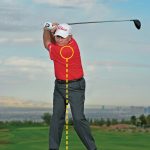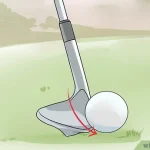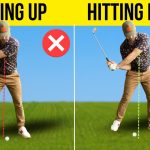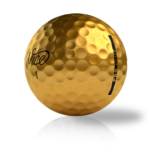To tee up a golf ball, place the tee in the ground and position the ball on top. Ensure the ball is at the correct height.
Teeing up a golf ball correctly is essential for a successful shot. The process begins with selecting the right tee height, which can vary based on the club you are using. For drivers, the ball should be higher, while for irons, it should be closer to the ground.
Proper placement ensures a cleaner strike and better control. Align the tee with the target, ensuring it is stable in the ground. Consistent teeing technique can significantly improve your performance on the course. Practice this fundamental step to enhance your overall game and enjoy more successful rounds of golf.
Choosing The Right Tee
Choosing the right tee can improve your golf game. The tee you use affects your shot’s height and distance. Let’s explore the different types of tees and how to pick the correct tee height.
Types Of Tees
Golf tees come in various materials and designs. Here are the most common types:
- Wooden Tees: Traditional, sturdy, and biodegradable.
- Plastic Tees: Durable, reusable, and come in many colors.
- Brush Tees: Reduce resistance, offering a cleaner shot.
- Rubber Tees: Often used on driving ranges, durable and flexible.
Each type of tee offers unique benefits. Choose based on your preference and needs.
Tee Height
Tee height is crucial for a good shot. Too high or too low can affect your swing. Here’s how to determine the right height:
- For drivers, the ball should be teed up so half of it is above the clubhead.
- For fairway woods, the ball should be slightly above the ground, about a quarter-inch.
- For irons, the ball should be just above the grass.
Adjust the height based on the club you use. This ensures optimal contact with the ball.

Credit: myavidgolfer.com
Selecting The Correct Golf Ball
Choosing the right golf ball is crucial. It affects your performance on the course. The right ball can improve your distance and accuracy. Let’s dive into key aspects of selecting the correct golf ball.
Ball Types
There are different types of golf balls. Each type suits different players. Here are the main types:
- Two-Piece Balls: These are great for beginners. They offer durability and distance.
- Three-Piece Balls: These provide better control. Ideal for intermediate players.
- Four-Piece Balls: These offer maximum spin and control. Perfect for advanced players.
Ball Compression
Ball compression is another important factor. It refers to how much the ball deforms upon impact. The right compression can improve your game.
| Compression Level | Player Type | Benefits |
|---|---|---|
| Low Compression | Beginners | Soft feel, more distance |
| Medium Compression | Intermediate | Balance of control and distance |
| High Compression | Advanced | Better control, less spin |
Choose the correct ball for your skill level. This will enhance your game and boost confidence.
Positioning The Tee
Positioning the tee properly can improve your golf game. It affects your swing, accuracy, and distance. Let’s explore the key aspects of positioning the tee for a better game.
Ground Conditions
The ground conditions play a crucial role. Hard ground needs a different approach than soft ground.
- Hard Ground: Use a shorter tee. This prevents the ball from wobbling.
- Soft Ground: Use a longer tee. This keeps the ball at the right height.
Always check the ground before placing the tee.
Tee Placement
The placement of your tee is vital. It affects the direction and height of your shot.
- Align the tee with your target line.
- Keep the tee height consistent.
- Position the ball just inside your front foot.
These steps help you achieve a better swing and more accurate shots.
| Ground Type | Tee Length | Benefits |
|---|---|---|
| Hard Ground | Short Tee | Prevents wobbling |
| Soft Ground | Long Tee | Keeps ball at right height |
Setting Up Your Stance
Mastering the art of setting up your stance is crucial for a perfect golf swing. A proper stance ensures balance, power, and accuracy. Let’s break down the key elements of an effective stance.
Feet Position
First, position your feet shoulder-width apart. This stance provides stability. Keep your weight evenly distributed on both feet.
Next, slightly turn your front foot towards the target. This small adjustment helps with your follow-through. The back foot should remain perpendicular to the target line.
For a driver, place the ball inside the front heel. For irons, position the ball centrally between your feet.
Body Alignment
Ensure your body alignment is correct. Your shoulders, hips, and feet should be parallel to the target line. This alignment ensures your swing path is straight.
Check your shoulder alignment. Imagine a straight line running across your shoulders, pointing to the target. Your hips should also be aligned with this line.
Maintain a slight bend in your knees. Keep your back straight and bend slightly at the waist. This posture promotes a smooth and powerful swing.
| Element | Description |
|---|---|
| Feet Position | Shoulder-width apart, weight even, front foot turned slightly. |
| Body Alignment | Parallel to target line, shoulders, hips, and feet aligned. |
| Posture | Knees slightly bent, back straight, bend at the waist. |
Follow these simple steps to set up your stance correctly. A good stance is the foundation of a great golf swing.
Gripping The Club
Gripping the club is one of the most important steps in golf. A proper grip can improve your accuracy and control. It can also help you avoid injuries. In this section, we will cover the basics of gripping the club.
Grip Types
There are three main grip types in golf:
- Overlapping Grip: The pinky finger of your trailing hand overlaps the index finger of your lead hand. This is the most common grip used by golfers.
- Interlocking Grip: The pinky finger of your trailing hand interlocks with the index finger of your lead hand. This grip is often used by players with smaller hands.
- Ten-Finger Grip: All ten fingers grip the club, similar to a baseball bat. This grip is easier for beginners and children.
Grip Pressure
Grip pressure is crucial for a good swing. Too tight or too loose can affect your game. Here’s how to manage it:
- Light Pressure: Imagine holding a tube of toothpaste without squeezing out any paste. This ensures you are not gripping too hard.
- Consistent Pressure: Maintain the same pressure throughout the swing. This helps keep your clubface square.
- Feel and Feedback: A lighter grip allows better feel and feedback from the club. This helps you make adjustments easily.
Remember to check your grip regularly. Adjust as needed to find what works best for you.
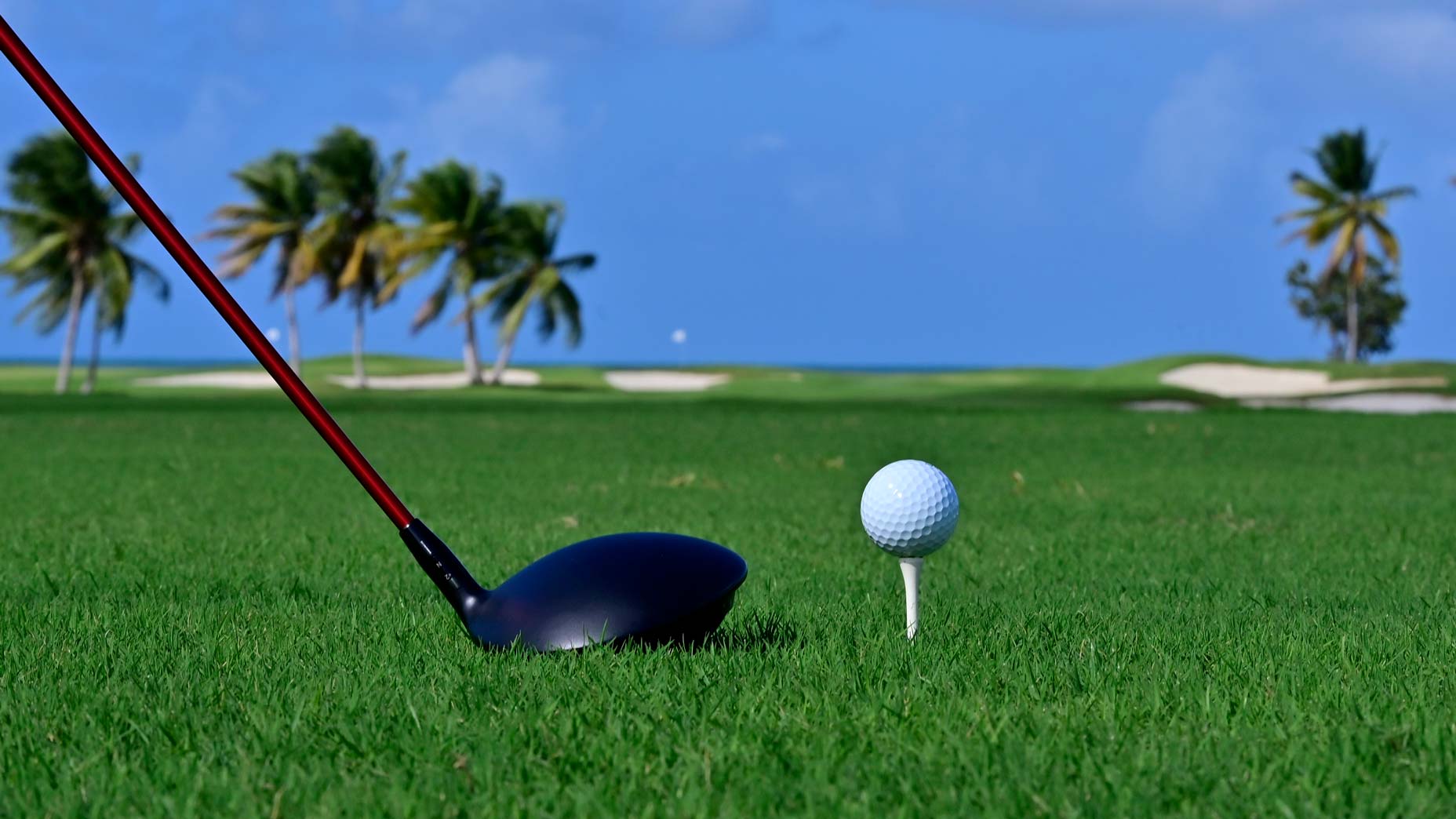
Credit: golf.com
Aiming For Accuracy
Achieving accuracy in golf is crucial. A well-aimed shot can make all the difference. Focus on precise alignment and clear visualization to improve your game.
Visualizing The Shot
Visualizing the shot helps you plan effectively. Picture the ball’s path in your mind. Imagine it soaring towards the target. This mental image guides your physical actions.
Stand behind the ball and look at your target. Pick a spot on the ground as a reference. This spot should be in line with your target.
Aligning The Clubface
Aligning the clubface ensures the ball travels where you want. Place the club behind the ball. The clubface should point directly at your target.
Use the lines on the clubface to help with alignment. Check that the clubface is square to your target line. This small step can improve your accuracy significantly.
| Step | Action |
|---|---|
| 1 | Stand behind the ball |
| 2 | Pick a reference spot |
| 3 | Place the club behind the ball |
| 4 | Align the clubface to the target |
| 5 | Check the clubface is square |
With these steps, your accuracy will improve. Practice regularly to master these techniques. Soon, aiming will become second nature.
Executing The Swing
Executing a perfect golf swing requires precision and practice. Understanding the key elements of your swing can improve your game. Focus on the backswing and the follow-through techniques to achieve better results.
Backswing Tips
The backswing is crucial for power and control. Here are some tips:
- Start slow: Begin your backswing slowly to maintain balance.
- Keep arms straight: Ensure your leading arm remains straight.
- Rotate shoulders: Turn your shoulders fully for a wider arc.
Always keep your eyes on the ball. A steady gaze ensures accuracy.
Follow-through Techniques
The follow-through completes your swing. It affects distance and direction. Focus on these techniques:
- Finish high: End your swing with the club high.
- Stay balanced: Maintain your balance throughout the follow-through.
- Rotate hips: Let your hips rotate naturally as you swing.
A strong follow-through ensures a powerful and accurate shot. Remember to keep your head steady.
Adjusting For Different Shots
Adjusting your tee height can improve your golf game. Different shots need different tee heights. This guide helps you tee up for driving and iron shots.
Driving Shots
For driving shots, use a driver club. Position the ball high on the tee. The ball’s equator should be level with the top of the clubhead. This position helps the ball launch higher and farther.
Follow these steps for perfect tee height:
- Use a long tee, about 2.75 inches.
- Insert the tee into the ground until only half is visible.
- Place the ball on the tee.
- Check the ball’s equator aligns with the clubhead’s top.
Remember to stand with your feet shoulder-width apart. Align the ball with the inside of your front foot.
Iron Shots
For iron shots, use an iron club. The ball should sit lower on the tee. This position allows better control and accuracy.
Follow these steps for perfect tee height:
- Use a shorter tee, about 1 inch.
- Insert the tee into the ground leaving only a small part visible.
- Place the ball on the tee.
- Check the ball’s bottom is just above the grass.
Stand with feet slightly narrower than shoulder-width. Align the ball with the center of your stance.
Each shot needs a different tee height. Adjust your tee for better performance.

Credit: m.youtube.com
Frequently Asked Questions
How Should You Tee Up A Golf Ball?
Place the tee in the ground at a height that aligns with the club you’re using. Ensure the ball sits level with the top of the driver for drivers and slightly lower for irons. Keep the tee stable and straight for consistent shots.
Adjust height based on personal preference and conditions.
How Do You Hit A Golf Ball Upwards?
To hit a golf ball upwards, position the ball forward in your stance. Use a lofted club and follow through.
How Do You Line Up A Ball On A Tee?
Place the ball on the tee. Align the ball with your target. Adjust your stance. Ensure the clubface points toward the target. Take a practice swing.
How Do You Get The Ball Up In Golf?
To get the ball up in golf, use a lofted club. Position the ball forward in your stance. Make a smooth, upward swing. Ensure proper follow-through to lift the ball.
Conclusion
Mastering the art of teeing up a golf ball can enhance your game significantly. Practice these steps to improve your consistency. Remember, the right tee height and ball placement are crucial. Keep refining your technique, and soon, you’ll see better shots and lower scores on the course.
Happy golfing!

